vortish
0
- Joined
- Feb 24, 2014
- Messages
- 1,425
- Points
- 83
nice to see ya mac been a long time and great photos

Follow along with the video below to see how to install our site as a web app on your home screen.
Note: This feature may not be available in some browsers.



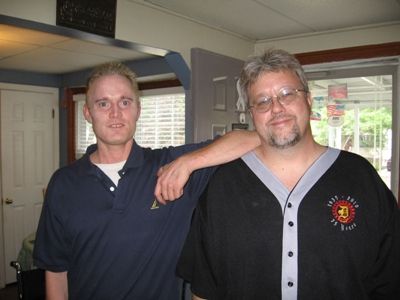
. . . Tuesday (Mar 7, 2017), David’s father, Kenneth Hahn, called Ars to confirm that his son died of alcohol poisoning and that his previous nuclear experiments played no role in his passing. He said that he came upon our months-old request for comment while cleaning out old e-mails
Citing a toxicology and autopsy report, Kenneth Hahn said his son was found with a dangerous level of blood alcohol content, 0.404, late in the evening on September 26, 2016. The "radiation injury," he explained, refers to a small burn on David's wrist dating back to his experiments.
"Dave was shopping at Walmart to get some food. It was around 10:30pm at night, and I guess he went to get some groceries," Kenneth Hahn said. "They found him in the restroom about 20 minutes later, deceased. There was no way to revive him."
Kenneth Hahn added that he didn’t learn of his son’s death until the Shelby Charter Township police arrived at about 2am the following morning to inform him of the news.
Prior to his death, Hahn accompanied his son to the Veterans Administration hospital for quarterly routine checkups. Medical staff there found no lingering ill effects from the earlier radiation exposure.
Father and son lived about a half mile away from one another. At the time of his death, Kenneth Hahn said, David was "in school taking three classes and was going to get his ASE certification to work as a major mechanic."
Kenneth Hahn said previously that his son had served as a sniper and master helmsman aboard the USS Enterprise, a nuclear-powered aircraft carrier.
"I’m proud of my son and I’m very sad that he’s gone," he said. "He could have done a lot more in this world."
David Charles Hahn was laid to rest at Great Lakes Military Cemetery in Holly, Michigan
This is not totally unique to fukushima though: Some people are also (illegally) resettling in the exclusion zones around chernobyl. The farm their own food and cattle in the exclusion zone for their own consumption, which might seem crazy, but the distribution of radioactive contamination is not uniform. There are sort of 'safe pockets' in these zones where background radiation is not that much higher than outside the exclusion zone.
Especially older people that are likely to die of something else before chronic radiation exposure seem to be sensible to choose to live in such areas - there is plenty of land, plenty of natural resources, and little chance of a tax collector daring to make it into such areas.
In Japan you have the situation where older people calculate this risk and even volunteered to work with the cleanup as the chances of them dying from radiation exposure before from something else were actually limited. I find this very noble.
Yes, no photos are to be taken inside the Missile Range until arriving at the Trinity and McDonald Ranch House sitesWhat's the no photo's allowed thing though? Is that purely for the white sands facilities?
Hi, Mac. Long time no see. Great photos. I knew they had something out there to mark the place. That was 72 years ago. I wouldn't want to be one of the people made to be out there right after the detonation.
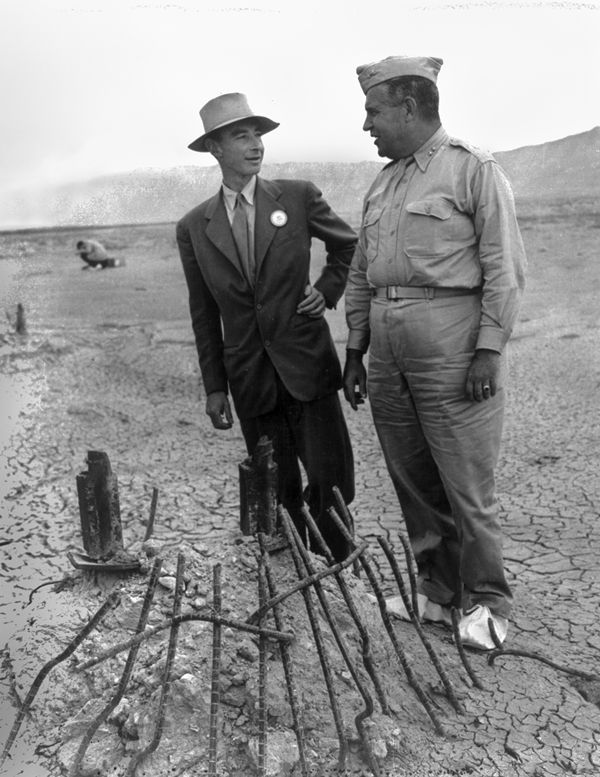
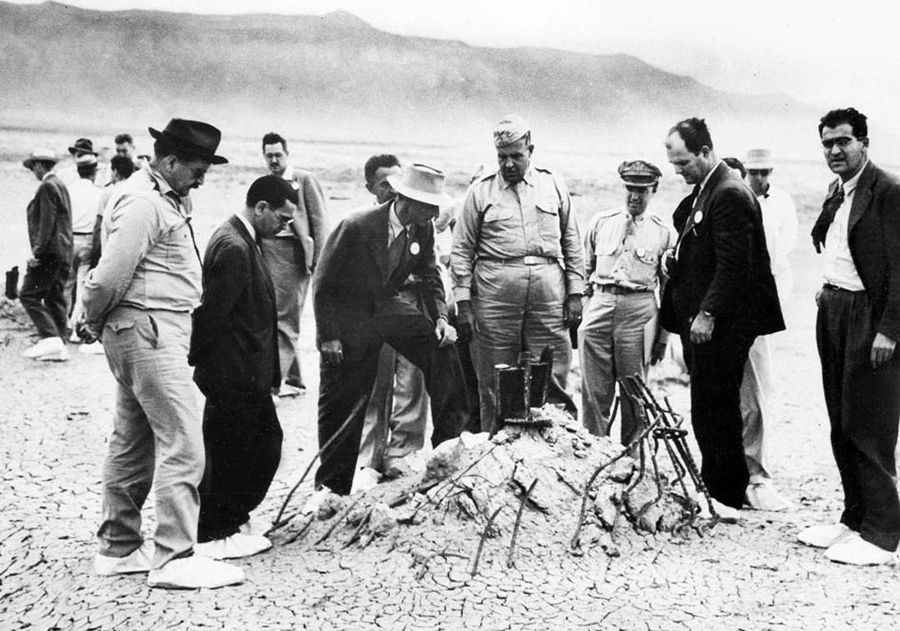
Fallout Effects
After the test. . . Extensive radiation measurements were taken for two weeks after the test and the Los Alamos Health Group made periodic regional spot checks over the next few months. Two months after the test, radiation had fallen to tolerant levels in the region of the cloud's path. Although health physicians closely monitored the effect the radiation had on the 1,000 people at the site on the test day, the effects the blast had on the environment would not be studied for another two years. Stafford Warren, dean of the UCLA Medical School, a veteran of Los Alamos, and one of the first physicians to visit Hiroshima after the war, had been trying to convince the Atomic Energy Commission (AEC) to allow a group to study the effect the test had on the area’s environment. The AEC was reluctant, but allowed Warren’s group to do so as a means to prevent future legal problems.
Warren's team went to the Trinity site every summer from 1947 to 1951. Only thirteen copies of each year's report were printed and from 1947 to 1949 they were classified as top secret. The initial investigations found Ground Zero clogged with radioactive tumble weeds. The trinitite was still visible although most had broken apart into pieces about two to three inches long. Within the fenced-in area of the site, radioactivity was found at a depth of 42 inches below the surface. This was neutron-induced radiation, which meant that the neutrons would continue to penetrate into the soil until they exhausted their energy. The area would essentially be radioactive forever.
The scientists saw clear evidence of fallout throughout the region. Unfissioned plutonium was found in desert rats, plant leaves, and soil samples, some from as far as 100 miles northeast of Ground Zero. Scientists tried to wash the plutonium particle fallout off the leaves of some plants but they found it impossible to remove. The early reports state that radioactive contamination seemed to be concentrated in the upper one to two inches of soil, but scientists worried it was seeping deeper.
In 1952 it was believed that the fallout had not had an extensive impact on the local ecology. The scientists felt that plutonium and other particles were only present in the top levels of soil and had not entered the food chain. Warren wanted to continue to visit the area around Trinity since he felt it was the best case study of fallout patterns. The AEC felt that since the exposure levels were low it wasn't worth the financial support. Today the radiation levels at Trinity are about 10 times higher than normal."
Fantastic Mac, thanks for sharing.
And so good to see you post again buddy.
Will rep you when I'm allowed again.
RB
:beer:
It was on a trip I made to meet up with an old friend in Albuquerque, NM that he and I visited the nuclear museum there, the mining museum in Grants, NM and the Trinity Site. I also had visited the nuclear museum in Las Vegas back earlier this year in February.Very nice, Mac. Are these more of your vacation photos? Cool.
Loved this post. Thank you Mac for sharing and providing pics of your Trinitite!
Tsar Bomba (Russian: Царь-бомба; "Tsar-bomb", or "King of bombs") was the Western nickname for the Soviet RDS-220 hydrogen bomb (code name Ivan or Vanya), the most powerful nuclear weapon ever detonated. Its test on 30 October 1961 remains the most powerful human-made explosion in history.
All buildings in the village of Severny (both wooden and brick), located 55 km (34 mi) from ground zero within the Sukhoy Nos test range, were destroyed. In districts hundreds of kilometers from ground zero wooden houses were destroyed, stone ones lost their roofs, windows, doors, and radio communications were interrupted for almost one hour. One participant in the test saw a bright flash through dark goggles and felt the effects of a thermal pulse even at a distance of 270 kilometres (170 mi). The heat from the explosion could have caused third-degree burns 100 km (62 mi) away from ground zero. A shock wave was observed in the air at Dikson settlement 700 km (430 mi) away; windowpanes were partially broken to distances of 900 kilometres (560 mi). The blast pressure below the burst point was 300 PSI, six times the peak pressure experienced at Hiroshima.
Atmospheric focusing caused blast damage at even greater distances, breaking windows in Norway and Finland. Despite being detonated 4.2 km above ground, its seismic body wave magnitude was estimated at 5–5.25. Sensors continued to identify the shockwaves after their third trip around the world.
The Tsar Bomba was a three-stage bomb with Trutnev-Babaev second and third stage design, with a yield of 50 megatons.This is equivalent to about 1,570 times the combined energy of the bombs that destroyed Hiroshima and Nagasaki, 10 times the combined energy of all the conventional explosives used in World War II, one-quarter of the estimated yield of the 1883 eruption of Krakatoa, and 10% of the combined yield of all nuclear tests to date.
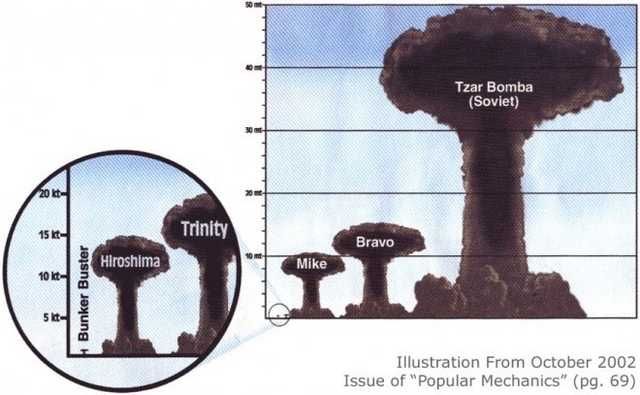
The initial three-stage design was capable of yielding approximately 100 Mt, 3,000 times the size of the Hiroshima and Nagasaki bombs, but it would have caused too much nuclear fallout and the plane delivering the bomb would not have had enough time to escape the explosion. To limit the amount of fallout, the third stage and possibly the second stage had a lead tamper instead of a uranium-238 fusion tamper (which greatly amplifies the reaction by fissioning uranium atoms with fast neutrons from the fusion reaction). This eliminated fast fission by the fusion-stage neutrons so that approximately 97% of the total yield resulted from thermonuclear fusion alone (as such, it was one of the "cleanest" nuclear bombs ever created, generating a very low amount of fallout relative to its yield). There was a strong incentive for this modification since most of the fallout from a test of the bomb would likely have descended on a populated Soviet territory.

The bomb, weighing 27 metric tons, was so large (8 metres (26 ft) long by 2.1 m (6 ft 11 in) in diameter) that the Tu-95V had to have its bomb bay doors and fuselage fuel tanks removed. The bomb was attached to an 800-kilogram parachute, which gave the release and observer planes time to fly about 45 kilometres (28 mi) away from ground zero, giving them a 50 percent chance of survival. When detonation occurred, the Tu-95V dropped one kilometer in the air because of the shock wave but was able to recover and land safely.
The Tsar Bomba's fireball, about 8 km (5.0 mi) in diameter, was prevented from touching the ground by the shock wave, but nearly reached the 10.5-kilometre (6.5 mi) altitude of the deploying Tu-95 bomber.
The Tsar Bomba detonated at 11:32 Moscow Time on 30 October 1961, over the Mityushikha Bay nuclear testing range (Sukhoy Nos Zone C), north of the Arctic Circle over the Novaya Zemlya archipelago in the Arctic Ocean. The bomb was dropped from an altitude of 10.5 km (6.5 mi); it was designed to detonate at a height of 4 km (13,000 ft) over the land surface (4.2 km (14,000 ft) over sea level) by barometric sensors.
Although simplistic fireball calculations predicted the fireball would hit the ground, the bomb's own shock wave reflected back and prevented this. The fireball reached nearly as high as the altitude of the release plane and was visible at almost 1,000 km (620 mi) away from where it ascended. The mushroom cloud was about 64 km (40 mi) high (over seven times the height of Mount Everest), which meant that the cloud was above the stratosphere and well inside the mesosphere when it peaked. The cap of the mushroom cloud had a peak width of 95 km (59 mi) and its base was 40 km (25 mi) wide.
For comparison, the largest weapon ever produced by the U.S., the now-decommissioned B41, had a predicted maximum yield of 25 megatons of TNT (100*PJ). The largest nuclear device ever tested by the U.S. (Castle Bravo) yielded 15 megatons of TNT (63*PJ) because of an unexpectedly high involvement of lithium-7 in the fusion reaction; the preliminary prediction for the yield was from 4 to 6 megatons of TNT (17 to 25*PJ). The largest weapons deployed by the Soviet Union were also around 25 megatons of TNT (100*PJ)
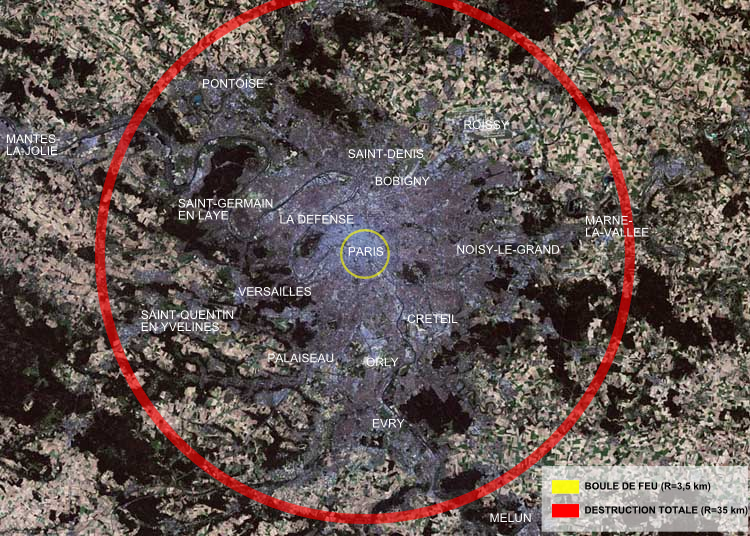
This weapon was developed in a remarkably short time. On 10 July 1961 Nikita Khrushchev met with Andrei Sakharov, then the senior weapon designer, and directed him to develop a 100 megaton bomb. This device had to be ready for a test series due to begin in September so that the series would create maximum political impact (a bomb this size is virtually useless militarily). Sakharov returned to Arzamas-16, and selected a design team consisting of Victor Adamskii, Yuri Babaev, Yuri Trutnev, and Yuri Smirnov (who later oversaw the transformation of this design into a fielded weapon). The bomb was tested only 16 weeks after the initiation of its design.

